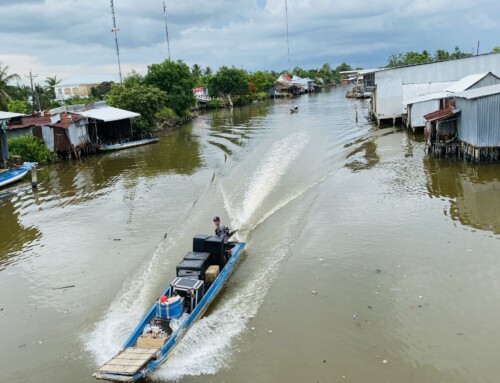Nepal’s road networks are essential for boosting trade, connecting communities, improving access to services and economic opportunities, and facilitating national and regional integration. Improving the resilience of Nepal’s roads has therefore been prioritized by the Government of Nepal as a key driver for socio-economic development, a reason the World Bank supported the project Geohazard Risk Management and Resilient Road Asset Management in Nepal. From June 2018 to September 2019, ICEM supported the Government of Nepal through a multi-hazard risk assessment of over 700 km of national roads, and the subsequent development and prioritization of risk mitigation measures to ensure the resilience of these road corridors now and into the future.
Multi-hazard risk assessment and road network criticality assessment
For eight road corridors located mainly in the western region of Nepal, ICEM demonstrated an innovative multi-hazard risk assessment methodology, composed of four risk indices and combining a set of risk parameters such as rainfall, climate change, geology, seismic intensity, slope, drainage and historical landslide events, among others. These four risk indices were consolidated into one “multi-hazard” risk index and formed the basis for assembling a road risk profile per road corridor.
Risk indices developed as part of the multi-hazard risk assessment

Data for each of the parameters were analyzed using GIS and integrating satellite imagery, hydrological and hydraulic modelling results, and expert verification. The data was processed and categorized into five levels of risk ranging from very low to very high risk. For each of the parameters, risk scores were assigned at 1km intervals along all eight target roads, weighted and combined to develop the final risk index scores for each road section. Results were then translated into a series of risk zoning maps for each road corridor, with more than 84 risk zoning maps handed over to Nepal’s Department of Roads for use in risk mitigation planning.
Sample of the risk assessment results for sections 5km to 15km of the Tallodungeshwor – Dailekh road

In a next step, a road network criticality assessment was undertaken which combined socio-economic information with the results of the risk assessment. The objective of this analysis was to support the prioritization of road investments and identify criticality ‘hotspots’ from an economic perspective. In addition to multi-hazard risk, criticality also considered ‘local importance’ based on settlements and cultivated lands near roads, and road intersections as a proxy for access to economic markets and services; and ‘strategic importance’, which considers traffic counts and population dependent on road sections.
Defining risk mitigation options
Risk mitigation in the context of this project refers to actions taken to reduce the anticipated impacts of natural hazards and climate change on the road assets. Through a series of consultative workshops, the Department of Roads and other Government partners developed recommendations for risk mitigation for the risk hot spots – or those road sections which scored “High” or “Very High” in the risk assessment. Throughout this process, ICEM promoted an integrated approach to risk mitigation taking into account a full range of mitigation options, including structural and bioengineering measures, policy and institutional measures, social responses, and financial mechanisms. Risk mitigation options were considered at multiple levels, including area wide planning (river basin or province), system-wide risk mitigation, specific asset mitigation, and support measures such as community based road management and regulatory enforcement in sectors such as forest and watershed protection. The recommendations form the basis for the development of road corridor risk mitigation plans by the Department of Roads and the local authorities.
Risk mitigation methodology

Decision Support System (DSS)
The results of the disaster and climate risk assessment, criticality assessment and risk mitigation planning were consolidated and integrated into an online, user-friendly, interactive web-based GIS platform. The DSS allows users to examine results of the multi-hazard risk assessment, socio-economic parameters, and criticality results for each of the road corridors considered under this project. By allowing users to actively engage with the data sets and results, sections of roads in high risk areas can be prioritized for on-the-ground assessment. The system can be readily scaled up, with new data and additional roads added by national road engineers and managers going forward.
Risk Zoning Maps section on the DSS website








Leave A Comment